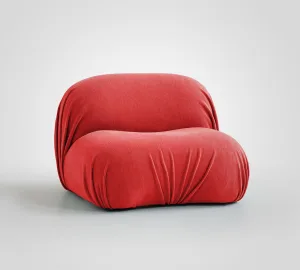The best way to clean the outside of your home is to start at the top and work your way down. Here are a few tips for bringing your house back to life. Get those old work clothes on, put on your boots, and let’s get started!
Your Roof
Asphalt shingles are the most common roofing material across the country despite the large variety. Listed below are some tips for cleaning traditional asphalt roofs, but the general steps can be followed no matter what roofs protect your home.
- You can use binoculars or a ladder to climb up for a better aerial view.
- Be sure to follow your ladder’s safety instructions every time you set it up.
- Replace any cracked or missing shingles. The fasteners for sliding shingles may have shifted. For roofs that require repair in numerous places, waiting for warmer temperatures will probably be best as asphalt shingles are less likely to crack and more supple.
- After everything is sturdy and secured, start cleaning the roof by blowing off leaves and loose debris with a leaf blower.
- You should then do a Curb Appeal Power Clean
- Clean your roof with water only at low pressure. When power washing is performed, loose shingles are easily torn and removed. Rather than high pressure, stick with high volume.
- To rid your roof of algae, lichen, and moss without damaging the shakes, shingles, or tiles, use a soft wash if your roof is under trees or in the shade.
Your Gutters
To maintain a home properly, gutters must be cleaned regularly. A backed-up or clogged gutter or downspout may damage your roof, fascia, soffit, and siding. Clogged gutters can even damage decking, rafters, and a house’s foundation if they remain unattended for long periods.
- Gather the following tools: a ladder, a hose, a bucket, a scoop, or a trowel. You’ll also be able to keep your hands clean when exploring nature’s treasure chest with gloves.
- Take care to clear leaves, twigs, and branches by hand. Remove the gunk on the bottom with your trowel or scoop. If you scoop out debris from around gutter fasteners it can be a chore to fish it out with your hands.
- After you’ve flushed out your gutters with water, use your garden hose’s spray nozzle. The ends of the downspouts must be opposite each other.
- Finally, improve the flow of water into your downspouts by adjusting your hose’s force. Clogs can often be cleared by climbing down a ladder, feeding the hose up from ground level into the downspout. If there is still a blockage, a plumber’s snake can be used to clear it.
Your Siding
The most popular type of cladding material in the United States, vinyl siding is recognized for its low price and easy maintenance. The advantages of vinyl include its many benefits, as well as its ease of maintenance with regular care. Make sure your pressure washer is in the garage for this project. As a result, they can create holes in the siding or force water into places it shouldn’t go, resulting in mold and rot issues down the road.
- Combine 70% water with 30% white vinegar to create your cleaner. Consider adding household bleach for extra mold-fighting power to the mix if the siding is particularly dirty. Also available are a variety of store-bought options.
- Any shrubs or flowers you wish to protect need to be covered, and anything blocking your hose and ladder needs to be removed.
- After closing the windows and vents, spray water on the siding to prepare it for cleaning.
- Using a pump sprayer, apply your cleaner and then brush textured surfaces to remove dirt and mold.
- The Vinyl Siding Institute advises starting from the ground level rather than from the top. As you go, rinse off any residue.
Your Windows
All year long, windows can become extremely dirty due to pollen, dust, and debris clinging to the glass and becoming stuck in the little nooks and crannies. The perfect time to clean your windows is when your roof and siding are already clean.
- Start by rinsing the windows with a garden hose. Dirt and grime stuck to surfaces are dislodged. You can soak anything leftover while you mix up your cleaner.
- Add three drops of liquid dish soap to a bucket of clean water.
- You can use a microfiber cloth or mop to scrub it depending on its size. Squeeze a gentle brush over the area and soak it with the cleaner to remove any stubborn stains. It is never a good idea to use steel wool.
- To clean the glass, either uses a store-bought solution or mix rubbing alcohol, vinegar, and water together. Microfiber cloths are more eco-friendly and perform even better than paper towels.
- Don’t forget about the screens! After removing them, spray them with a vinegar-water solution before rinsing them with plain water. Before reinstalling, ensure the area has been dried thoroughly and no dust has accumulated.
- Also, these tips can be applied to vinyl patio doors!
Congrats! You accomplished what you set out to do. With your home now clean and protected you can sit back and enjoy its benefits for many months to come. If you find that your house is looking tired, you might want to consider replacing your windows, patio doors, siding, or shutters to boost curb appeal, not to mention peace of mind.






